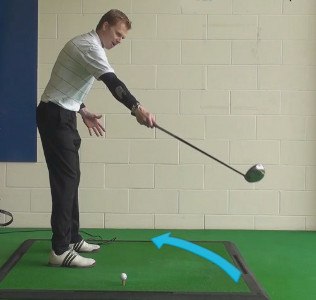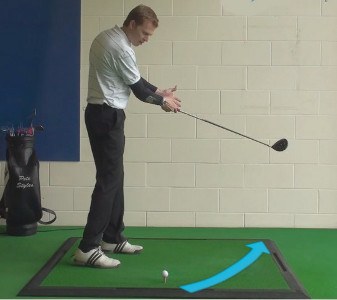So you know that you slice the ball, but do you know why? More importantly, do you know how to fix it?
Most golfers understand that sidespin causes the ball to curve to the right (fade or slice for a right-hander) and left (draw or hook). They realize sidespin results from a clubface that’s open (right) or closed (left) in relation to the club’s path at impact. Beyond that, however, they’re often at a loss to explain why their own swings produce such misguided shots.
Here’s a primer on the most common swing faults associated with various unwanted shot shapes:

Slicing:
- Poor weight transfer: Instead of shifting the weight to the right foot on the backswing, then left on the downswing and follow-through, golfers who “reverse pivot” do exactly the opposite.
- Over-the-top swing path: Starting the downswing with the arms and hands, rather than the lower body, often sends the club into the impact zone from outside the target line. The over-the-top swing can also result from standing too open (body aimed left) at address, a poor shoulder turn on the backswing, or from swinging on a plane that’s too upright or vertical.
- Failure to release the club: When the forearms and hands don’t rotate through the hitting area, the clubface is left open at impact. This can result from poor lower-body rotation, a lack of shoulder turn or a reverse pivot.

Hooking:
- Swing is too flat/inside-to-outside: While it’s desirable for the club to approach the ball from inside the target line, overdoing this action can cause a hook. This is usually caused by a swing plane that’s too flat, or horizontal.
- Poor alignment: If your body is aligned right of the target, you may subconsciously steer the ball back on line by shutting the clubface and hooking it. Aligning right when the clubface is aimed correctly, at the target, can also generate an overly inside-to-out swing path.
- Overuse of hands: Golfers who take the club back very quickly often suffer from hooks. The same goes for those who “whip” the club abruptly to start the downswing, closing the clubface before impact.
Search Golf-Info-Guide.com for tips to cure any of the issues listed within this article.
Golf Ball Videos:
– Compression Video
– Spin Video
– Dimples Video
– Golf Ball Brands Video
– Titleist Video
– Understanding Spin Video






